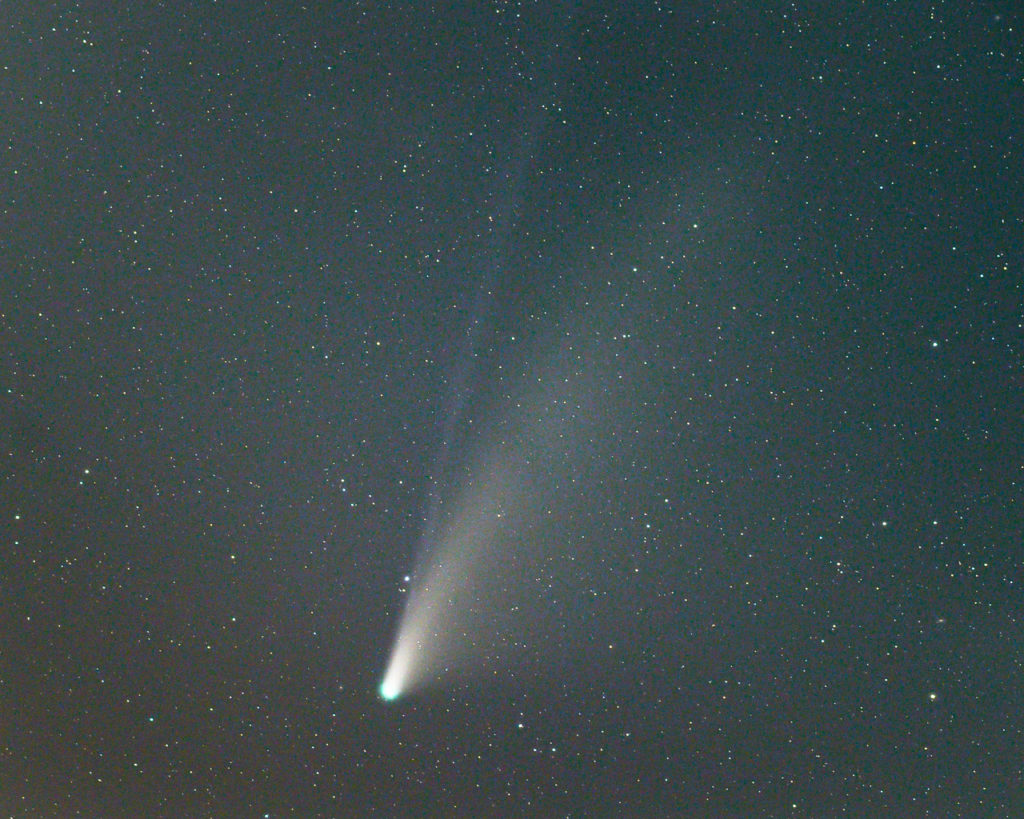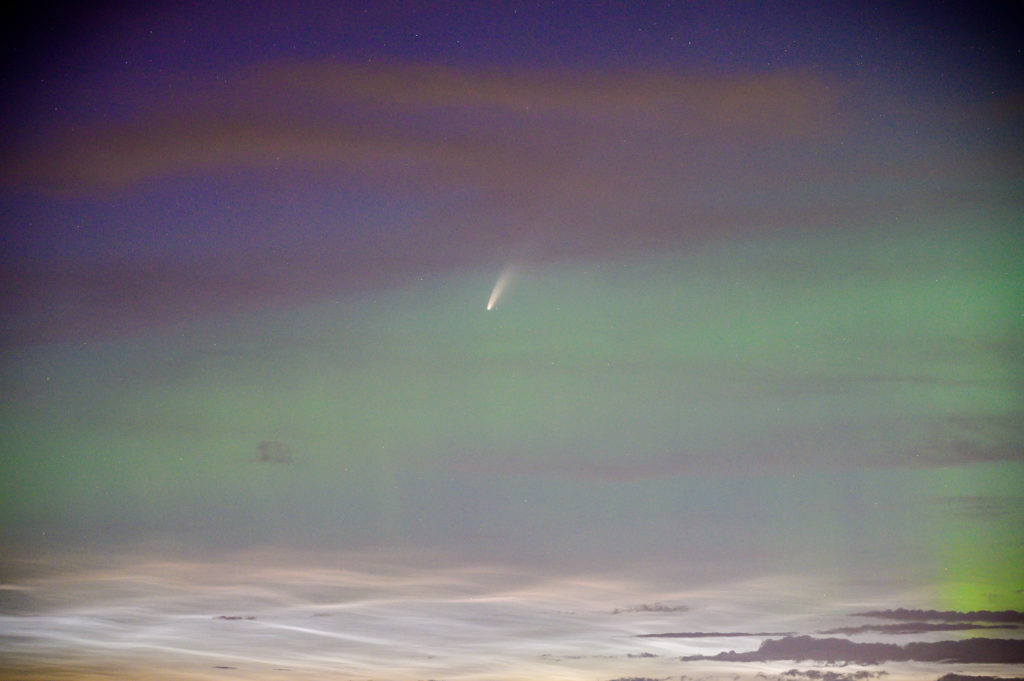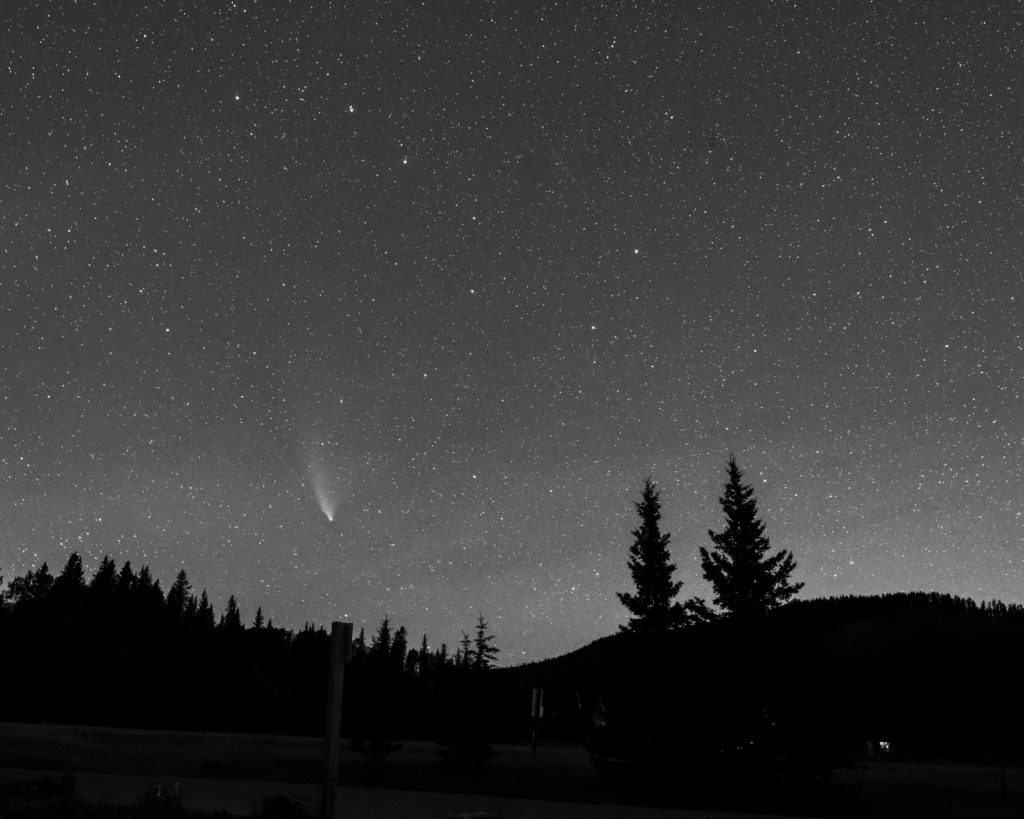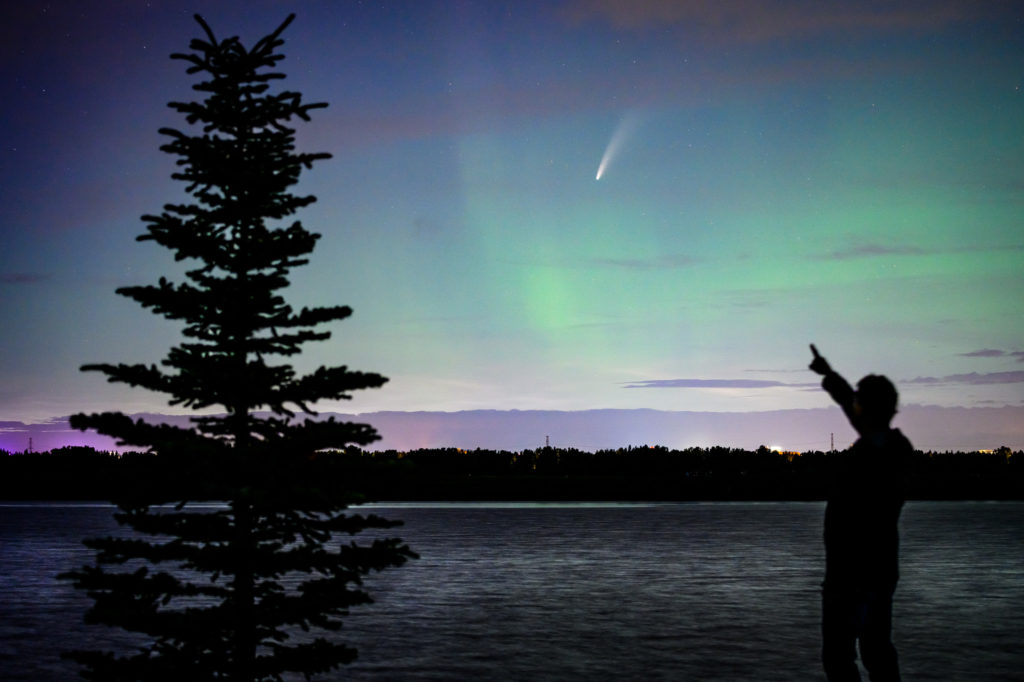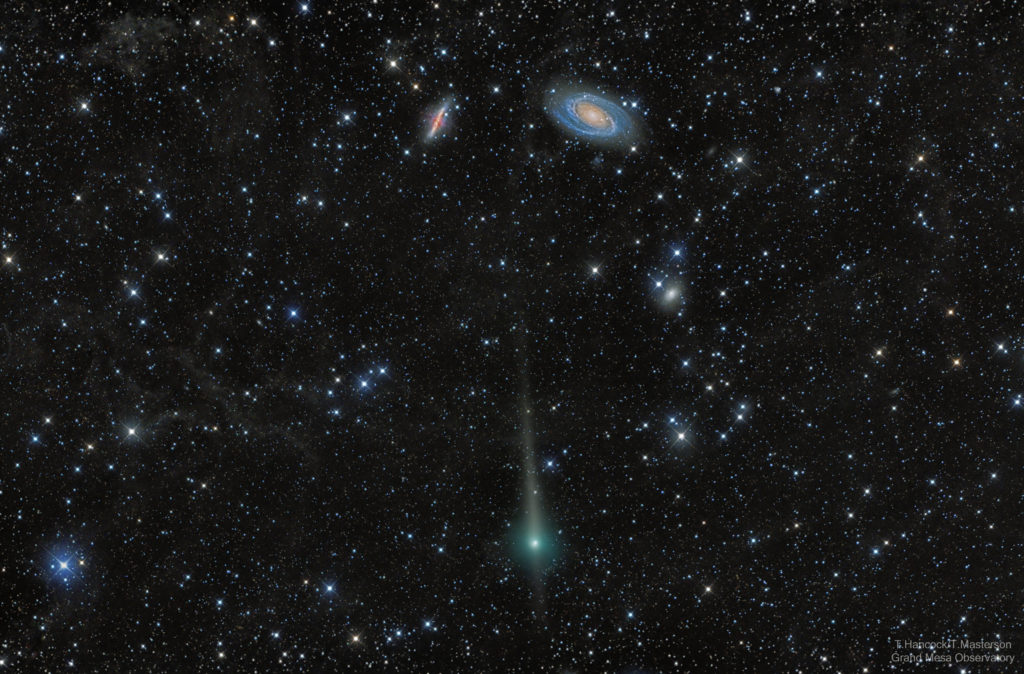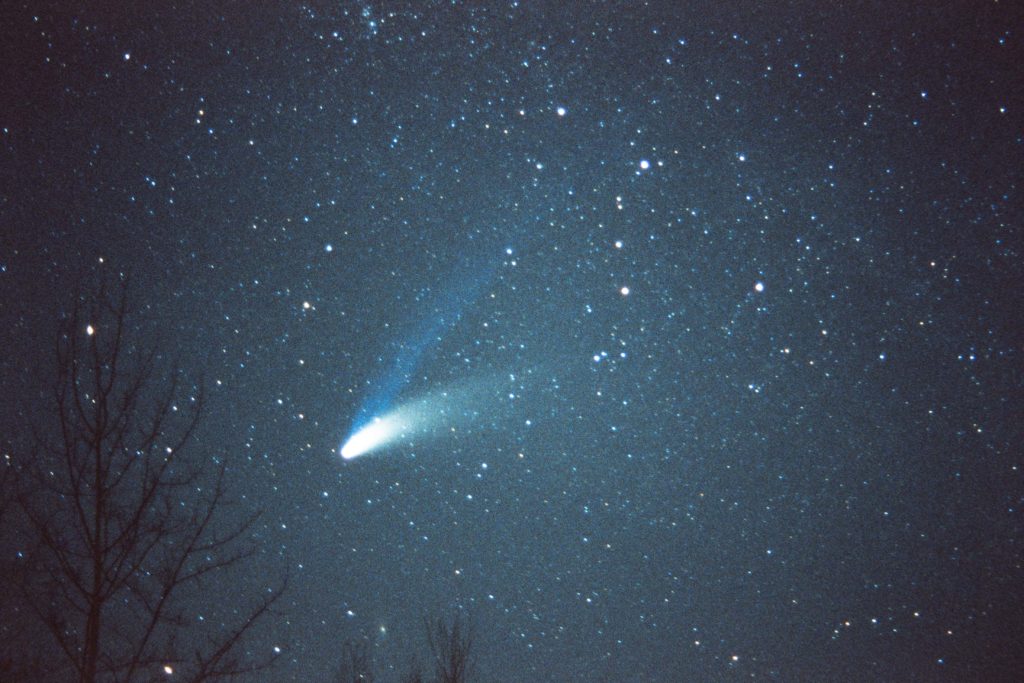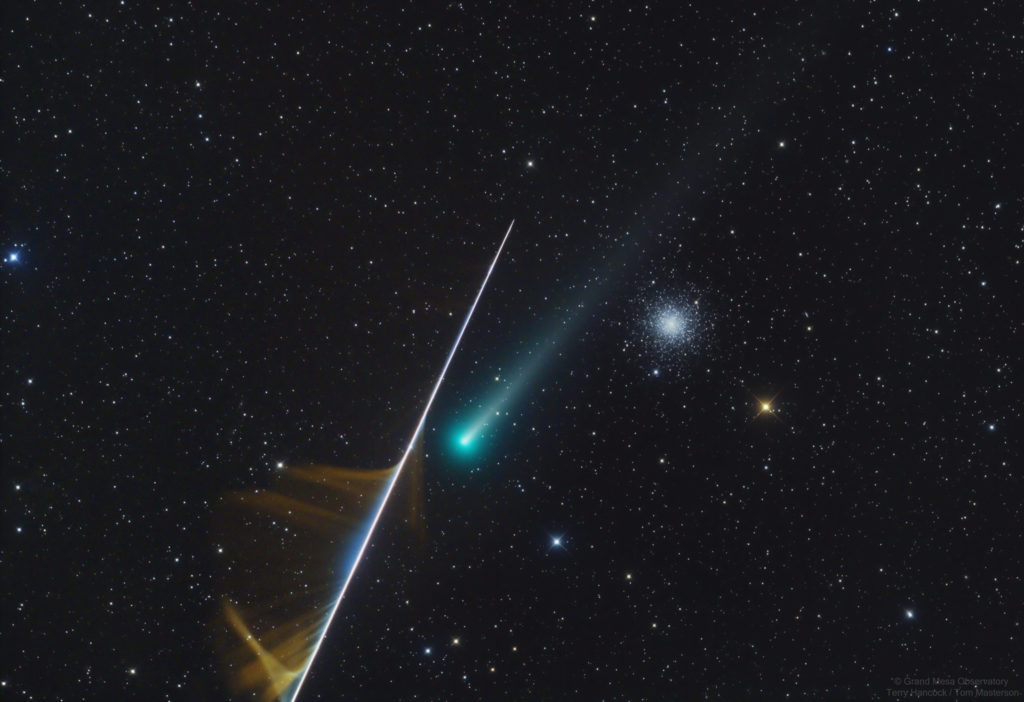
Comet Leonard (C/2021 A1) has been putting on quite a show, at least for astrophotographers, low over the southern horizon late in December through early January. The faint tail has grown to an immense length and clearly appears to be breaking into pieces as this spectacular image reveals. In early January it remains an elusive object and one better positioned for southern-hemisphere observers.
But if you haven’t managed to see it, you can still enjoy plenty of online images. One of the most spectacular was captured by the expert imagers Terry Hancock and Tom Masterson as the comet passed the globular cluster Messier 3 in Canes Venatici in the early-morning sky on December 3. As they processed this once-in-a-lifetime image, they discovered a pleasant surprise – a meteor trail blazed through the field of view! Here you see the mesmerizing yellow-orange glow of the meteor trail left by sulfur and iron atoms left in the trail of the burnt-up meteor. The image was captured with a QHY367 Pro C one-shot color CMOS camera and a Takahashi E180 Astrograph using the System 4a telescope at Grand Mesa Observatory.
Bob King has a recent update and more images of the comet at the Sky & Telescope website.
Share This: